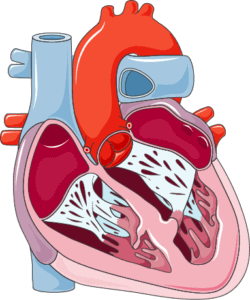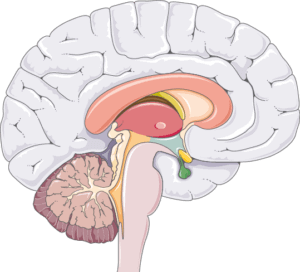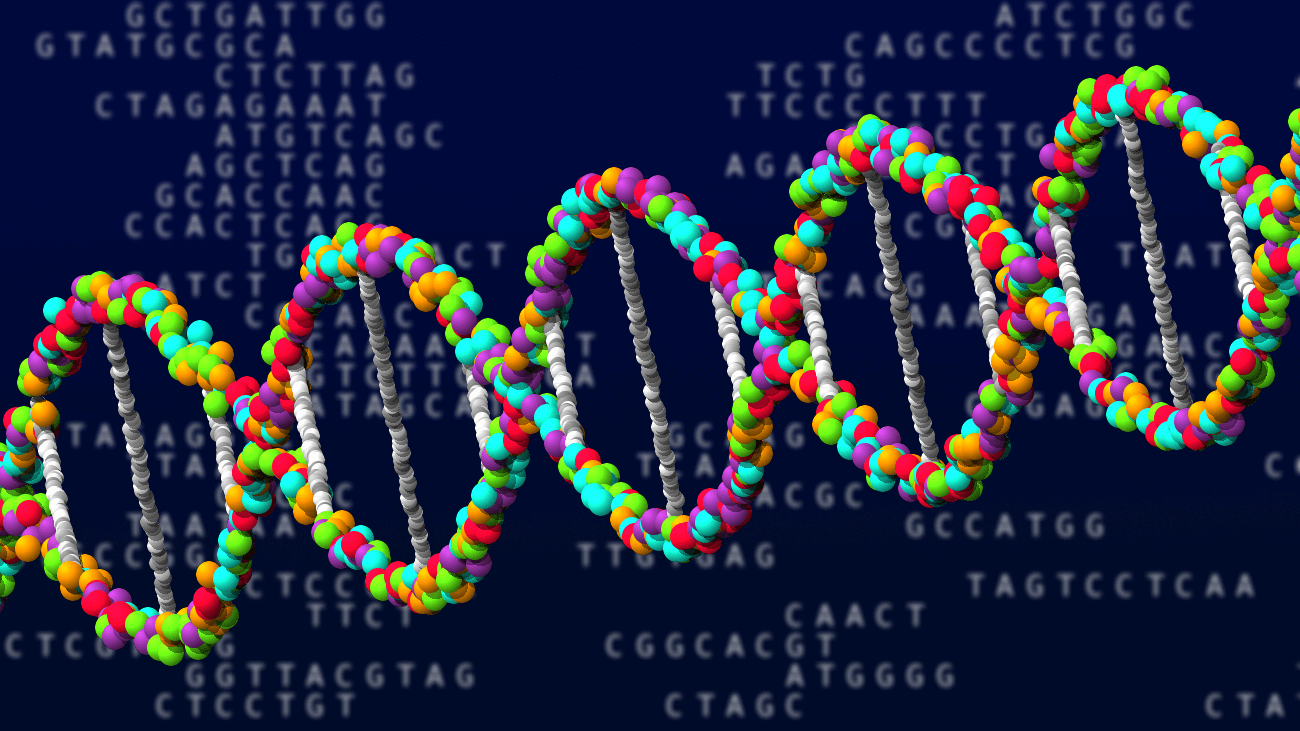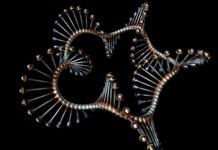Part 2: Epigenetics and non-coding RNA: miRNAs and LncRNAs in the aging process
In addition to molecular causes such as DNA methylation, histone modifications and chromatin remodelling, gene expression can be regulated by the action of non-coding RNAs. These are small RNAs that do not code for proteins, but will interact with gene transcripts, messenger RNAs (mRNAs), or transcriptional modulators, to control them. The large family of non-coding RNAs includes small non-coding RNAs and long non-coding RNAs. Deregulations in their biogenesis and functions are involved in aging and are associated with many human diseases[1].
MicroRNA : non-coding RNA to regulate gene expression
The most important small non-coding RNAs in epigenetics are microRNAs (miRNAs), which consist of an average of eighteen to twenty-two nucleotides. During the aging process, many of these miRNAs are deregulated, activating cell senescence and, in the longer term, the development of pathologies.

The primary function of miRNAs is to regulate gene expression after transcription via their link to messenger RNAs. This regulation is carried out by two mechanisms that depend on the degree of complementarity between their sequence and that of their target mRNAs. If the sequence complementarity is perfect, binding of the miRNA will cause a deterioration of the messenger RNA. On the contrary, if the sequence complementarity is imperfect, there will be no degradation of the mRNA but an inhibition of its translation into protein[2]. MiRNAs regulate nearly half of the messenger RNAs in cells, and each miRNA can have up to several hundred target genes. The miRBase database currently lists 1982 miRNAs in humans and they would be expressed in all cell types[3,4].
The other group of non-coding RNAs that play an important role in epigenetics is the so-called long non-coding RNAs (lncRNA for LongNonCodingRNA), because they are composed of more than 200 nucleotides. They have a function in many cellular processes such as growth, differentiation and senescence. Like miRNAs, their level of expression changes with age[5]. Changes in the activity of these RNAs lead to premature aging or positively influence longevity, depending on the target and the mechanism used. Their mechanisms of action differ from miRNAs in that they modulate gene expression by targeting transcriptional activators and repressors, not the mRNA sequence directly[6]. The first IncRNA found in humans is H19, which plays a role in DNA methylation, and since then more than 120,000 long non-coding RNAs have been recorded in humans[7].

MiRNAs during the aging process
As we age, the levels of expression of some miRNAs vary: they are either over-expressed or under-expressed. These changes affect their functions, and changes in their expression profile have been described in several diseases, including cancers. This is the case of miR-31, over-expressed in breast cancer cells, and probably responsible for the production of reactive species that damage DNA[8]. Another study[9] highlighted 158 deregulated miRNAs in humans associated with metabolic and signal transduction pathways involved in the pathogenesis of type 2 diabetes. These results suggest that these miRNAs may play a role in the development of the disease. In addition, abnormalities in the expression of multiple miRNAs are found in neurodegenerative diseases. Many miRNA levels are altered in the brains of Alzheimer’s disease patients, and more than 60 miRNAs are altered in the cerebrospinal fluid. It appears that some of these miRNAs contribute to the pathogenesis of Alzheimer’s disease by influencing the production of proteins that aggregate in cells, including proteins Aβ[10]. Aberrant levels of miRNA have also been found in the brains of Parkinson’s disease patients, including miR-133 and miR-34, as have 75 miRNA in Huntington’s syndrome[10]. Finally, aberrations in the expression level of miRNAs are found in most cardiovascular diseases, such as coronary heart disease, myocardial infarction and heart failure[11].
These differences in levels can also have positive consequences on longevity. It has been shown that in dwarf long-lived mice, miR-27α in the liver and miR-470, miR-669b and miR-681 in the brain are high[12]. These changes are measurable and their association with aging has led to a new concept: miRNAs can be used as biomarkers of aging. From the early 2000s to the present, knowledge of non-coding RNAs has evolved considerably, and over the past decade or so, many publications have highlighted the use of miRNAs as biomarkers. Recently, these studies have increased in humans, extending knowledge and applications on age-related human diseases, including cardiovascular diseases[11], cancers[12] and neurodegenerative diseases[13,14].



MiRNAs as biomarkers of aging-related diseases
In Alzheimer’s disease, the study of the increased expression of certain miRNAs makes it possible to identify the disease with accuracy, sensitivity and specificity[11]. MiRNAs are also observed in Parkinson’s disease, as they can differentiate between sick and untreated subjects and healthy subjects[12]. For other human diseases, miRNA expression signatures, i.e. a combination of several miRNAs, are still being studied. In type 2 diabetes, some downwardly regulated miRNAs are already regulated several years before the onset of the disease and could be used as potential biomarkers. Finally, as another case study example, people who have had an acute myocardial infarction have a high expression of miR-208a that can be quickly detected in the blood, and can therefore be used as a fast diagnostic tool[12].
MiRNAs & aging : Long non-coding RNAs and aging
With age, long non-coding RNAs are also subject to changes in expression. These changes are correlated with age-related diseases, or on the contrary, seem to improve longevity. For example, Kcnq1ot1 is an IncRNA that modifies histones and is associated with the development of age-related cardiovascular disease[5]. On the contrary, the lncRNA TERRA will contribute to the maintenance of the heterochromatin structure[5], necessary for cellular balance. In addition, aberrations of lncRNA expression are known to be found in cancers: some are overexpressed in lung cancer metastases, breast cancer or prostate cancer. Their presence in large quantities is correlated with a poor prognosis of survival, the onset of metastases, increased cell proliferation and colony formation. These RNAs can therefore be used as biomarkers, particularly for survival prognosis[8].
In addition to their implications for epigenetic processes, these RNAs affect other causes of aging. TERC and TERRA RNAs are respectively involved in maintaining the length of telomeres and preventing telomeric elongation. Other lncRNAs are involved in proteostasis because they modulate autophagy, protein synthesis or degradation, among other things. Finally, the action of lncRNA on cyclins, the regulatory proteins of the cell cycle, influences growth, differentiation or even senescence[5].
MiRNAs and aging: Non-coding RNAs, therapeutic targets against age-related diseases

Since knowledge of non-coding RNAs has evolved and their roles in aging processes or longevity are known, methods to target them and control their functions have been developed. MiRNAs can be targeted by small interfering RNAs or miRNA “sponges” that capture them and prevent them from binding to their target mRNAs. More recently, antagomiRs (or antimiRs) have also been developed to bind to miRNAs[12]. Such techniques are mainly developed for cancers: inhibiting miRNAs that are oncogenic would make it possible to extinguish certain pro-cancer signals. Such anti-cancer therapies could be coupled with conventional therapies to improve treatment effectiveness and cancer cure rates
Je suis un bloc de texte, cliquez sur le bouton \”éditer\” pour me modifier. Lorem ipsum dolor sit amet, consectetur adipiscing elit. Ut elit tellus, luctus nec ullamcorper mattis, pulvinar dapibus leo.
Non-coding RNAs, particularly miRNAs and long non-coding RNAs, play a major role in age-related epigenetic changes. By combining their expression profile with different age-related pathologies, non-coding RNAs could become widely used diagnostic and prognostic tools in the future. They could also become therapeutic targets against these diseases, since they would make it possible to extinguish the expression of genes involved in aging or to stimulate pro-longevity genes.
References
[1] Veena S. Patil, Rui Zhou, and Tariq M. Rana. Gene regulation by noncoding RNAs. Crit Rev Biochem Mol Biol. 2014 ; 49(1): 16–32. doi:10.3109/10409238.2013.844092.
[2] C. Bret & J.F. Schved, Le contrôle de l’expression des gènes par les microARN, Implications au cours de l’hématopoïèse et des hémopathies malignes, Correspondances en Onco-hématologie – Vol. IV – n° 1 – janvier-février-mars 2009.
[3] Bertone P et al., Global identification of human transcribed sequences with genome tiling arrays. Science. 2004; 306(5705):2242-6.
[4]
[5] Ioannis Grammatikakis, Amaresh C. Panda, Kotb Abdelmohsen and Myriam Gorospe. Long noncoding RNAs (lncRNAs) and the molecular hallmarks of aging, AGING, December 2014, Vol. 6 No.12, 992-1009.
[6] Devika Garg, Stephen M. Cohen. miRNAs and aging: A genetic perspective, Ageing Research Reviews 17 (2014) 3-8.
[7] https://lncipedia.org/
[8] B. Victoria et al. MicroRNAs and the metabolic hallmarks of aging. Molecular and Cellular Endocrinology 455 (2017) 131-147.
[9] Yuqing He, Yuanlin Ding, Biyu Liang, Juanjuan Lin, Taek-Kyun Kim, Haibing Yu, Hanwei Hang and Kai Wang, A Systematic Study of Dysregulated MicroRNA in Type 2 Diabetes Mellitus, Int. J. Mol. Sci. 2017, 18, 456; doi:10.3390/ijms18030456.
[10] Hanuma Kumar Karnati, Manas Kumar Panigrahi, Ravi Kumar Gutti, Nigel H. Greig and Ian A. Tamargo, miRNAs: Key Players in Neurodegenerative Disorders and Epilepsy, J Alzheimers Dis. 2015 ; 48(3): 563–580. doi:10.3233/JAD-150395.
[11] Elsa Bronze-da-Rocha, MicroRNAs Expression Profiles in Cardiovascular Diseases, BioMed Research International Volume 2014, Article ID 985408, 23 pages.
[12] Justin Williams, Flint Smith, Subodh Kumar, Murali Vijayan, P. Hemachandra Reddy. Are microRNAs true sensors of ageing and cellular senescence? Ageing Research Reviews 35 (2017) 350-363.
[13] Theresa A. Lusardi, Jay I. Phillips, Jack T. Wiedrick, Christina A. Harrington, Babett Lind, Jodi A. Lapidus, Joseph F. Quinn and Julie A. Saugstad, MicroRNAs in Human Cerebrospinal Fluid as Biomarkers for Alzheimer’s Disease, J Alzheimers Dis . 2017 ; 55(3): 1223–1233. doi:10.3233/JAD-160835.
[14] Margherita Grasso, Paola Piscopo, Annamaria Confaloni and Michela A. Denti, Circulating miRNAs as Biomarkers for Neurodegenerative Disorders, Molecules 2014, 19, 6891-6910; doi:10.3390/molecules19056891.
Anne Fischer

Author
Auteur
Anne is studying medicine science at the Institute of Pharmaceutical and Biological Science in Lyon and she has graduated with a Bachelor’s degree in molecular and cellular biology at the University of Strasbourg.
More about the Long Long Life team
Anne étudie les sciences du médicament à l’Institut des Sciences Pharmaceutiques et Biologiques de Lyon. Elle est titulaire d’une licence en biologie moléculaire et cellulaire de l’Université de Strasbourg.
En savoir plus sur l’équipe de Long Long Life
Dr Guilhem Velvé Casquillas

Author/Reviewer
Auteur/Relecteur
Physics PhD, CEO NBIC Valley, CEO Long Long Life, CEO Elvesys Microfluidic Innovation Center
More about the Long Long Life team
Docteur en physique, CEO NBIC Valley, CEO Long Long Life, CEO Elvesys Microfluidic Innovation Center
En savoir plus sur l’équipe de Long Long Life








